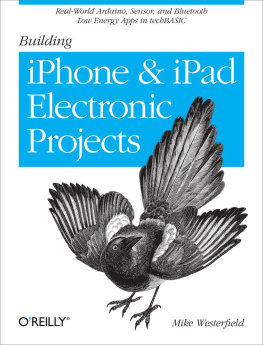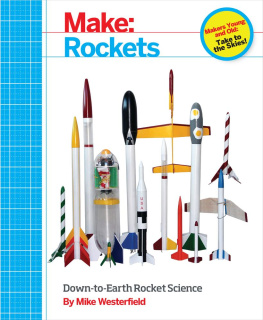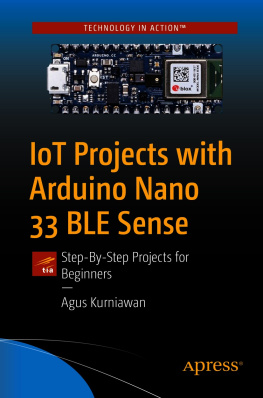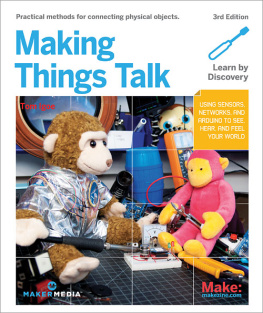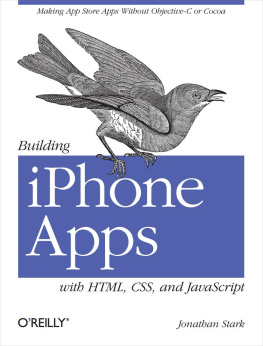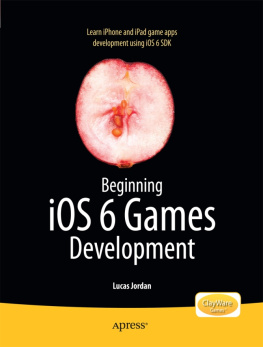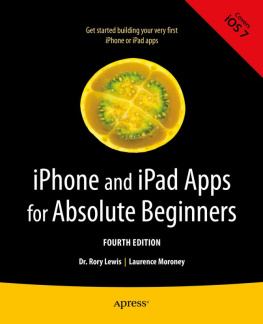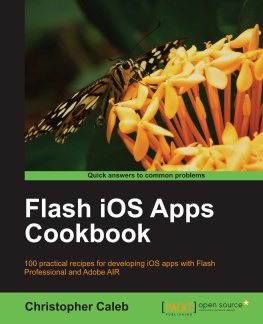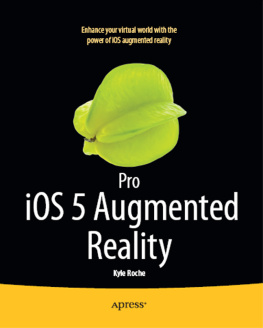Building iPhone and iPad Electronic Projects
Mike Westerfield
Beijing Cambridge Farnham Kln Sebastopol Tokyo
Special Upgrade Offer
If you purchased this ebook directly from oreilly.com, you have the following benefits:
DRM-free ebooksuse your ebooks across devices without restrictions or limitations
Multiple formatsuse on your laptop, tablet, or phone
Lifetime access, with free updates
Dropbox syncingyour files, anywhere
If you purchased this ebook from another retailer, you can upgrade your ebook to take advantage of all these benefits for just $4.99. to access your ebook upgrade.
Please note that upgrade offers are not available from sample content.
Preface
You carry an amazing scientific instrument around in your pocket every day, using it for mundane tasks like making phone calls or listening to music. Your iPad 2 is as fast as a Cray-2 supercomputer from just a few decades ago, yet most people only use it to read books or surf the Web. What a waste.
This book is all about connecting your iPhone, iPod Touch, or iPad to the real world. Youll start by learning how to access the sensors built right into your device. Next youll see how to connect wired sensors through the headphone port using a wonderful little device called HiJack. Several chapters show various ways to use Bluetooth low energy to connect to sensors, Arduino microcontrollers, motor controllers, and even other iPhones or iPads. Finally, youll see exactly how to use WiFi to connect to the Internet or physical devices connected to WiFi devices.
It would be pretty boring to make all of these connections just to make a few LEDs light up, so the book is organized around fun, interesting projects. The built-in sensors are used to create a metal detector. HiJack is hooked up to a simple electrical device so it can be used as a plant moisture sensor. Bluetooth low energy connects to a Texas Instruments SensorTag to detect acceleration to track the flight of a model rocket, and later to an Arduino microcontroller to hack a radio-controlled car, showing how to create robots and control them with your iPhone. Bluetooth low energy can also be used for peer-to-peer communication between iOS devices. You will learn how this is done by creating an arcade game that uses iPhones for game paddles. WiFi will be hooked up to a serial bridge to control servos, ultimately hacking a candy dispenser to give you candy under iPhone control.
Our look at each topic starts with a chapter that introduces the basic concepts using a simple project. One or more chapters follow these introductions, presenting the fun projects just mentioned. You may not want to build every one of them yourself, but reading through how they are created and how they work, you will get ideas about how to build your own projects.
You dont need to go through this book linearly. If a project in the middle of the book seems really interesting, jump right to it. Each chapter starts with a section called About This Chapter. It lists the prerequisites, telling you which other chapters contain information you might need before attempting the project in the chapter you are interested in.
All of the hardware in the book is developed with electronic components you can buy from many Internet stores, but some of it is hard to find locally. Plan ahead. Glance at the parts list in a chapter a week or two before you want to get started, and order the parts you need.
Finally, the projects in this book cover several disciplines. Theres a lot of software, quite a bit of electronics, and a fair amount of mechanical engineering involved. Some of the stuff in this book is going to seem beyond your abilities. I know a few of the projects seemed that way to me as I wrote the book. After all, even though most of us have some technical ability, either through education or experience with hobbies, almost no one is fully qualified at computer science, electrical engineering, mechanical engineering, and physics.
Be brave, grasshopper.
Everything is laid out very carefully. If you dont know much about software, start with the completely developed programs in the book, all of which are built right into techBASIC. If you dont know one end of a battery from another, just wire stuff as you see it in the diagrams and photos that carefully document each circuit. As you learn more, you can experiment. Sure, there will be some failures along the way. I burned out a circuit or two and crashed a lot of software writing the book, and youll do the same as you read it. Thats how we learn.
I hope you dont just build the projects in this book, though. The whole point is to learn how to do things, not just follow some plans. Whether youre a professional trying to figure out how to remotely access data from a buried seismograph, a student exploring robotics for a science fair project, or an inventor tinkering with awesome ideas in your garage, I hope this book gives you some techniques and ideas that will enable you to create amazing things by combining software, electronics, and mechanics to build devices.
So, lets go forth and control our world!
Conventions Used in This Book
The following typographical conventions are used in this book:
Italic Indicates new terms, URLs, email addresses, filenames, and file extensions. Constant width Used for program listings, as well as within paragraphs to refer to program elements such as variable or function names, databases, data types, environment variables, statements, and keywords. Constant width bold Shows commands or other text that should be typed literally by the user. Constant width italic Shows text that should be replaced with user-supplied values or by values determined by context.
Tip
This icon signifies a tip, suggestion, or general note.
Warning
This icon indicates a warning or caution.
Using Code Examples
This book is here to help you get your job done. Where this book includes code examples, you may use the code in this book in your programs and documentation. You do not need to contact us for permission unless youre reproducing a significant portion of the code. For example, writing a program that uses several chunks of code from this book does not require permission. Selling or distributing a CD-ROM of examples from OReilly books does require permission. Answering a question by citing this book and quoting example code does not require permission. Incorporating a significant amount of example code from this book into your products documentation does require permission.
We appreciate, but do not require, attribution. An attribution usually includes the title, author, publisher, and ISBN. For example: Building iPhone and iPad Electronic Projects by Mike Westerfield (OReilly). Copyright 2013 James M. Westerfield, 978-1-449-36350-5.
If you feel your use of code examples falls outside fair use or the permission given above, feel free to contact us at .
Safari Books Online
Note
Safari Books Online is an on-demand digital library that delivers expert content in both book and video form from the worlds leading authors in technology and business.
Technology professionals, software developers, web designers, and business and creative professionals use Safari Books Online as their primary resource for research, problem solving, learning, and certification training.

